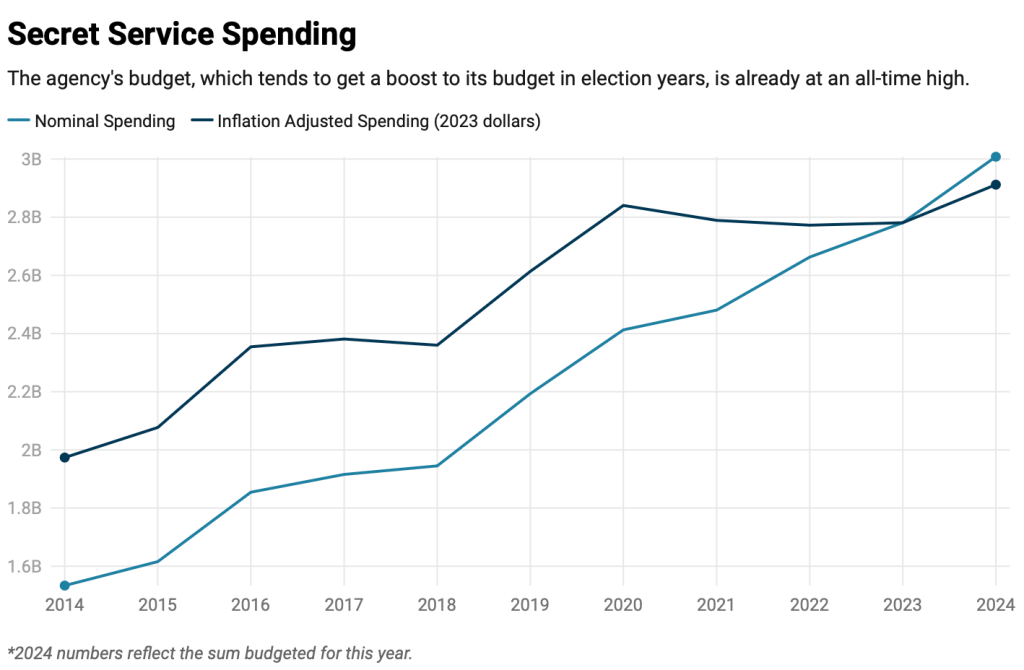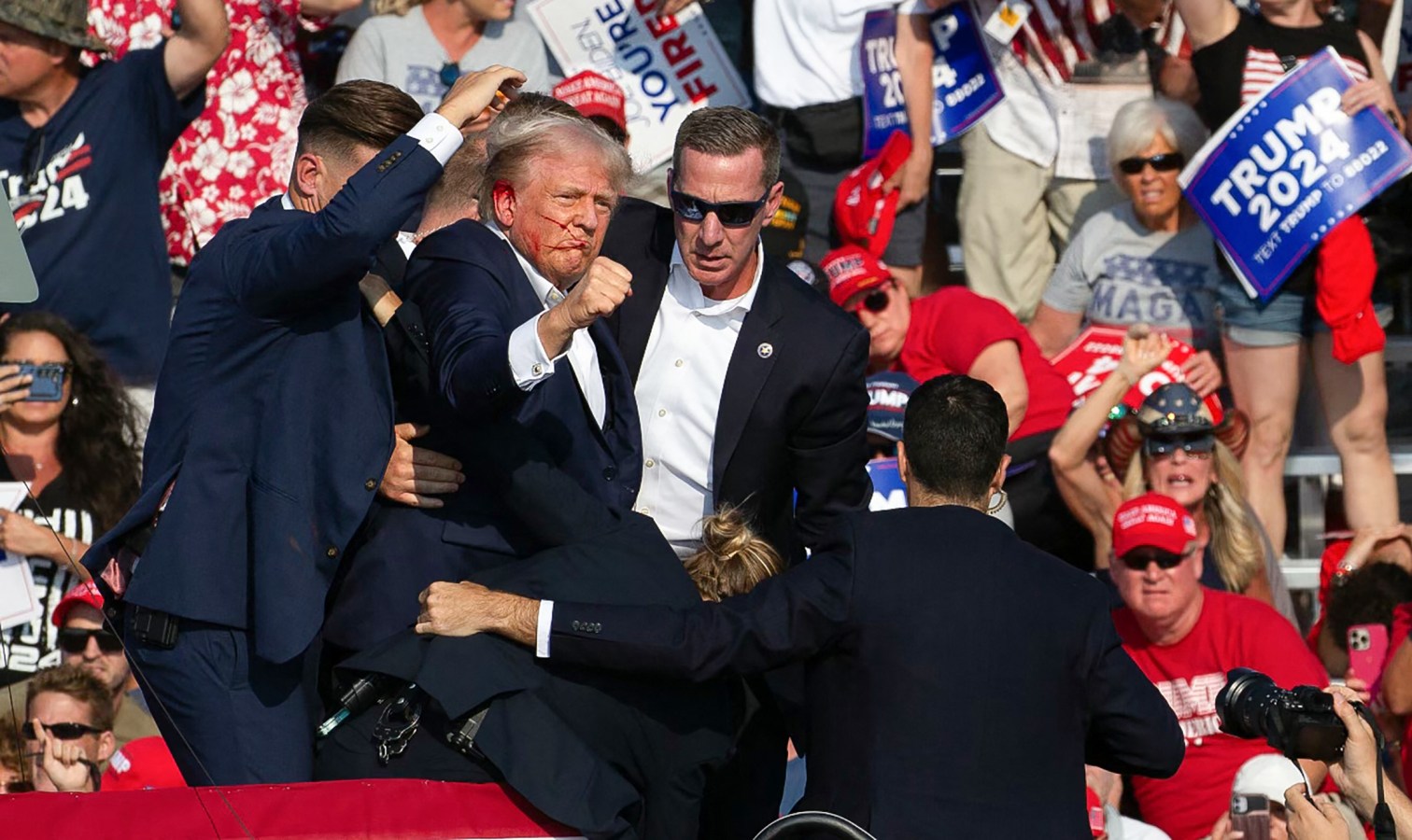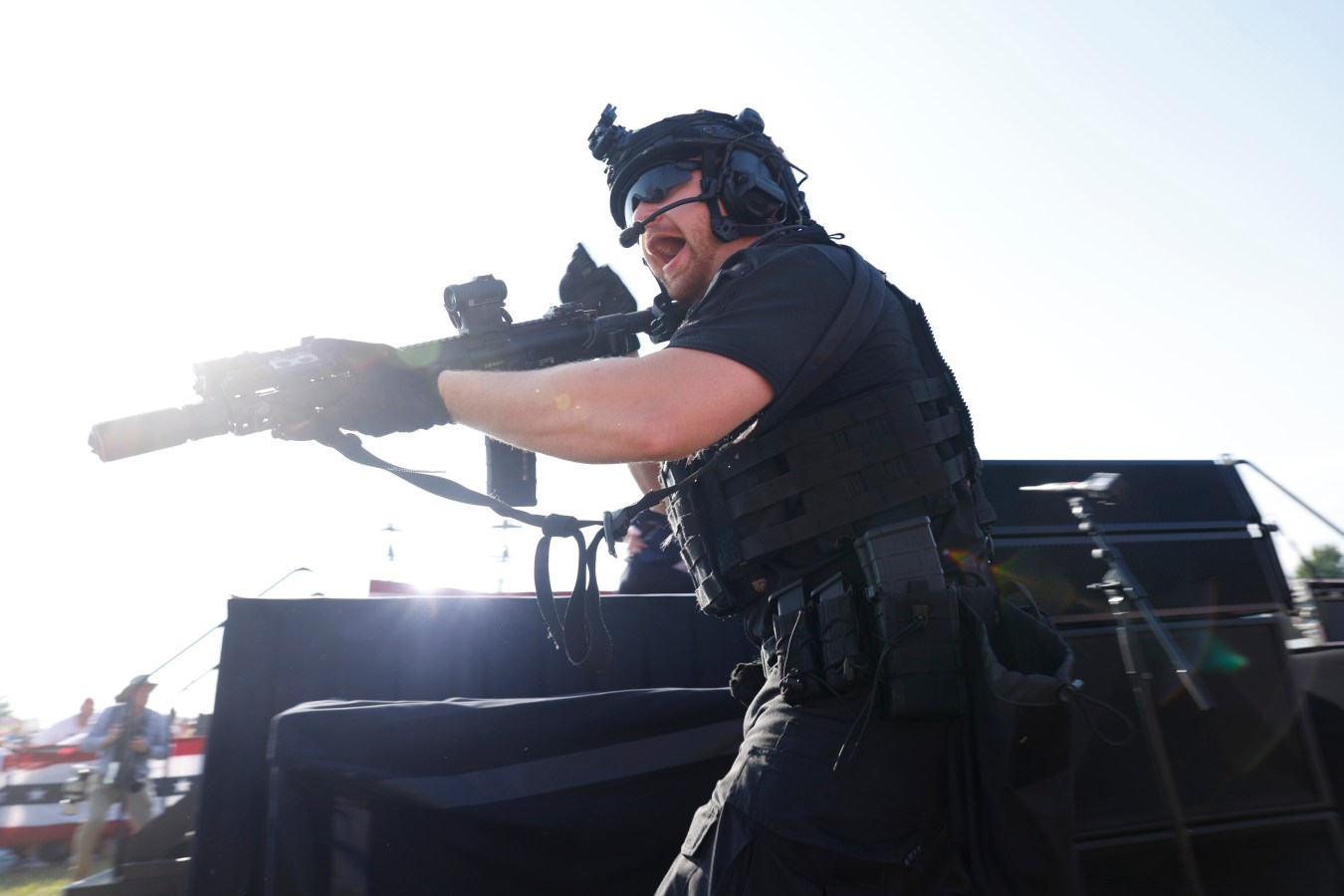Even on an inflation-adjusted basis, the Secret Service has its highest-ever budget in at least a decade. After Saturday’s events, lawmakers are bound to be interested in how they’re using it.

In the hours after a Pennsylvania man allegedly fired several shots at former President Donald Trump before being killed by the Secret Service, multiple members of Congress called for investigations into how the agency tasked with protecting presidents, candidates and their families allowed such a close call.
At a press briefing Saturday, representatives from the FBI and state police were asked about the building that the alleged shooter had shot from. “We’ll really have to defer to Secret Service for those questions,” Kevin Rojek, who heads the FBI’s Pittsburgh field office, replied. No Secret Service representative was present at the briefing.
House Oversight Committee Chair Rep. James Comer sent a letter Saturday demanding that Secret Service Director Kimberly Cheatle testify on July 22. “Heads ought to roll over this,” wrote Rep. Tim Burchett of Tennessee on X, formerly Twitter, before endorsing an expedited hearing this week.
One thing lawmakers will likely examine: the Secret Service’s budget. The agency, which did not immediately respond to a request for comment, was allocated over $3 billion in taxpayer dollars in 2024—up from $2.78 billion last year—for its operations. That’s almost certainly the most the Secret Service has ever had at its disposal. Adjusted for estimated inflation, that $3 billion is still about $100 million higher than the 2023 budget and the highest since at least 2014, according to a Forbes analysis. The Secret Service budget previously reached an inflation-adjusted peak in 2020, the last presidential election year.

Chart: Kyle Mullins, Stephen Pastis. Source: USASpending.Gov, Forbes Reporting. Created with Datawrapper
The agency, housed within the Department of Homeland Security, has already spent about $1.8 billion this fiscal year, as of the end of May. (The government’s fiscal year begins on October 1.) According to a Treasury Department breakdown, the Secret Service has dropped more than $800 million on “protective operations,” plus another $500 million on field operations and $300 million on “mission support.” It has also spent $75 million on training and professional development, $50 million on “protective countermeasures” and $20 million on computer forensics. An agency spokesperson said Sunday in a statement on X that it had recently ramped up security for the former president.
Cheatle may also have to answer questions on the agency’s various scandals over the years. In 2022, four agents—including one protecting Dr. Jill Biden, the president’s wife—were reportedly fooled by two men posing as federal agents who gave them gifts over a period of months. Other recent embarrassing incidents include a prostitution scandal in Colombia in 2012, a breach of the White House’s fence in 2014 and an agent who, in 2021, publicly accused Biden supporters of treason following the 2020 election.
Related
The Secret Service has been tasked with protecting the president since 1901, following the assassination of William McKinley. Its role expanded to include former presidents and their spouses in 1965, following John F. Kennedy’s killing. It was expanded further to major candidates and their spouses in 1968, after Robert F. Kennedy was assassinated while campaigning.
Robert F. Kennedy, Jr., RFK’s son currently running for president as an independent, has requested Secret Service protection multiple times but has been refused by the Department of Homeland Security on the grounds that he does not meet the definition of a major candidate. Neither Kennedy’s campaign nor the department immediately responded to a request for comment.
Today, the Secret Service has over 3,000 agents, plus 1,300 uniformed officers and over 2,000 additional support staff, according to its website. Those figures may soon grow: On Sunday, two members of the House announced plans for a bipartisan bill to provide additional security for Trump, Biden and RFK Jr.
This article first appeared on forbes.com and all figures are in USD.
Are you – or is someone you know -creating the next Afterpay or Canva? Nominations are open for Forbes Australia’s first 30 under 30 list. Entries close midnight, July 31, 2024.
Look back on the week that was with hand-picked articles from Australia and around the world. Sign up to the Forbes Australia newsletter hereor become a member here.


